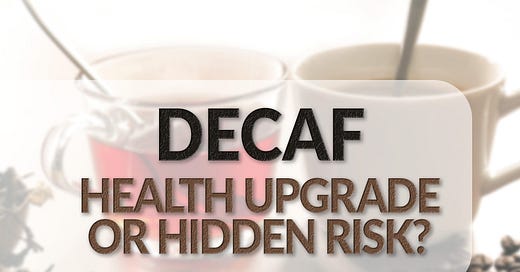Decaf: Health Upgrade or Hidden Risk?
The surprising science behind a small decision with big consequences.
For the last year or so, I’ve mostly switched to decaffeinated tea. It started in the evenings, a gentle wind-down, but soon became a full-time habit. I still have my lunchtime full-strength coffee to fend off that mid-afternoon slump, but otherwise, it’s decaf all the way.
I’m a happy tea and coffee drinker, not just for the flavour an…
Keep reading with a 7-day free trial
Subscribe to One Health Tweak a Week to keep reading this post and get 7 days of free access to the full post archives.




